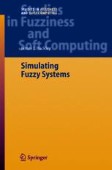Search
Search Results
-
Optimizing a Production Line
The simple production line considered in this chapter is shown in Fig. 20.1. This problem has been adapted from an example in [1]. This situation is...
-
Queuing I: One-Step Calculations
In this chapter we show situations where simulation can produce the same results as fuzzy calculations which employ the extension principle. We argue...
-
Simulation Programs
In this chapter we present some of the GPSS programs used in Chaps. 9–26. We had to omit many programs in order to keep this chapter. less that 20...
-
Summary and Conclusions
The first objective of this book is to explain how many systems naturally become fuzzy systems. The second objective is to show how regular (crisp)...
-
Optimal Control of Differential-Algebraic Inclusions
In this paper we consider the following dynamic optimization problem ( P ) governed by differential-algebraic inclusions:...
-
A Continuous Control Mechanism for Uncertain Nonlinear Systems
The control of uncertain nonlinear systems is a topic that continues to challenge control theoreticians. This topic is also of practical importance...
-
On Impulses Induced by Singular Perturbations
The possibility that a singularly perturbed controlled dynamics generates impulses in a slow dynamics coupled to it, is investigated. A scheme for...
-
Machine Shop I
The queuing system in this chapter is shown in Fig. 11.1. This application was adopted from a problem in ([1], p.594). We continue this problem in...
-
Inventory Control II
This chapter continues the inventory control problem studied in the previous chapter. The new system is shown in Fig. 17.1. We have added two things...
-
Project Network Model
The project network diagram is in Fig. 26.1. This problem is modelled after an example in [2]. The project consists of various jobs that must be...
-
Queuing II: No One-Step Calculations
In this chapter we will study the fuzzy system shown in Fig. 5.1 now reproduced as Fig. 9.1. This example was adapted from an example in [1]. The...
-
Min–Plus Eigenvector Methods for Nonlinear $\rm H_\infty$ Problems with Active Control
We consider the H 4 problem for a nonlinear s y stem. The corresponding dynamic programming equation (DPE) is a fully nonlinear, first-order,...
-
Lyapunov Functions and Feedback in Nonlinear Control
The method of Lyapunov functions plays a central role in the study of the controllability and stabilizability of control systems. For nonlinear...
-
Distance to Bifurcation in Multidimensional Parameter Space: Margin Sensitivity and Closest Bifurcations
The problem of operating or designing a system with robust stability with respect to many parameters can be viewed as a geometric problem in...
-
Parameter Identifiability of Nonlinear Biological Systems
Parameters characterizing the internal behaviour of biological and physiological systems are usually not directly accessible to measurement. Their...
-
Qualitative Analysis of Regulatory Graphs: A Computational Tool Based on a Discrete Formal Framework
Building upon the logical approach developed by the group of R. Thomas in Brussels, we are defining a rigorous mathematical framework to model...
-
Differential Systems with Positive Variables
The variables of biological, ecological, or chemical systems are often positive, because they measure concentrations, numbers, ...We study polynomial...
-
Completion Problems for Positive Matrices with Minimal Rank
Matrix completion problems studies the partial matrices, that is, a rectangular matrix some of whose entries are specified, and the remainder entries...
-
Linear Positive Systems and Phase-type Representations
In this paper we try to put a bridge between the theory of phase-type distributions and the general theory of positive linear systems. The phase-type...
-
Estimation and Strong Approximation of Hidden Markov Models
We give novel conditions for the existence of the limit of the normalized log-likelihood function for a finite-state continuous read-out Hidden...
